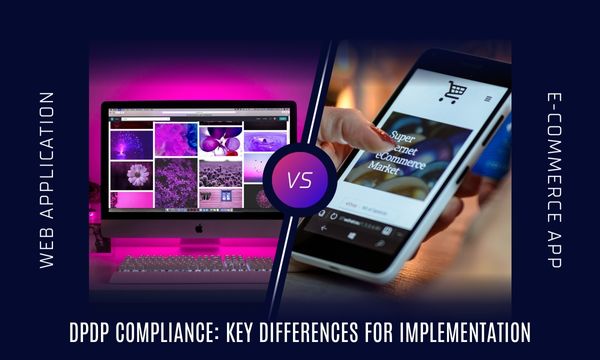
In a world where businesses increasingly rely on technology, the line between operational disruptions and cybersecurity threats has blurred. A natural disaster, a system outage, or a cyberattack can bring business operations to a standstill, often with devastating consequences.
The numbers are staggering, in 2023 alone, ransomware attacks cost businesses over $20 billion globally, with many organizations taking weeks to recover. For small businesses, 60% shut their doors within six months of a major cyber incident. These statistics underscore a harsh reality—business continuity and cybersecurity are no longer optional; they are critical to survival and success.
But here’s the good news: when cybersecurity is seamlessly integrated into your Business Continuity Plan (BCP), you don’t just prepare for disruptions—you gain the ability to prevent them, respond faster, and emerge stronger. This blog dives into the why and how of aligning cybersecurity with BCP, offering actionable insights to safeguard your business against modern threats.
The Critical Link Between Cybersecurity and BCP
Business Continuity Planning focuses on keeping operations running during disruptions, while cybersecurity defends against threats that could trigger those disruptions. Cyber threats are a major source of operational breakdowns, with over 80% of global businesses experiencing some form of cyberattack in 2023 according to the report by Statista. Integrating cybersecurity into your BCP ensures that your organization is prepared for digital threats and physical disruptions alike.
Steps to Integrate Cybersecurity into Your Business Continuity Plan
1. Conduct a Comprehensive Risk Assessment
Why it Matters
Cybersecurity adds depth to your BCP by addressing risks specific to digital assets, such as unauthorized access, malware, and insider threats.
How to Implement:
* Perform a cybersecurity risk assessment alongside your traditional BCP risk analysis.
* Use frameworks like ISO 27005 or NIST RMF (Risk Management Framework) to identify vulnerabilities.
Example:
A 2023 IBM report revealed that organizations with regular risk assessments reduced the cost of data breaches by 27%. By understanding risks early, you can prioritize cybersecurity measures within your BCP.
2. Identify and Protect Critical Business Assets
Why it Matters:
Your most valuable data and systems must remain secure and operational during any disruption. Cybersecurity ensures these assets are not only accessible but also protected.
How to Implement:
* Classify assets into tiers based on their importance to operations.
* Use encryption, multi-factor authentication (MFA), and access controls for sensitive data.
Example:
In 2022, a manufacturing firm avoided $2 million in downtime costs by securing its operational technology systems as part of its cyber-BCP integration.
3. Develop a Unified Incident Response Plan
Why it Matters:
A disjointed response to incidents can lead to chaos, worsening the impact of an attack. Cybersecurity ensures swift and coordinated action.
How to Implement:
* Form a cross-functional incident response team comprising IT, cybersecurity, and business continuity experts.
* Integrate response protocols for cyberattacks, such as ransomware or data breaches, into your BCP.
Fact:
Ponemon Institute found that businesses with an integrated incident response plan saved an average of $1.76 million in recovery costs in 2023.
4. Secure Backup and Recovery Systems
Why it Matters:
Cyberattacks like ransomware often target backups. A secure backup strategy is crucial for recovery and continuity.
How to Implement:
* Use immutable backups that cannot be altered or deleted.
* Regularly test backups for usability during continuity drills.
Example:
A 2023 Gartner report indicated that businesses with immutable backups recovered from ransomware attacks 50% faster than those relying on traditional methods.
5. Train Employees on Cyber Hygiene and BCP Protocols
Why it Matters:
Employees are both the first line of defense and a potential weak link. Training empowers them to act effectively during disruptions.
How to Implement:
* Offer regular cybersecurity training on recognizing phishing, managing passwords, and handling sensitive data.
* Incorporate BCP roles into these training sessions, so employees know their responsibilities during crises.
Tip:
Gamify training sessions with quizzes and rewards to improve employee engagement and knowledge retention.
6. Test Plans Regularly Through Simulations
Why it Matters:
Regular testing ensures that your BCP and cybersecurity measures remain effective against evolving threats.
How to Implement:
* Conduct joint simulations of cyberattacks and business disruptions.
* Use results to identify gaps and improve both cybersecurity measures and continuity protocols.
Example:
During a simulated ransomware attack, a financial services company identified slow recovery times and optimized its response, reducing potential downtime by 60%.
7. Stay Compliant with Regulatory Standards
Why it Matters:
Compliance with standards like GDPR, ISO 22301, and ISO 27001 not only ensures robust BCP and cybersecurity measures but also avoids legal penalties.
How to Implement:
* Align your BCP with cybersecurity regulations and audit regularly.
* Use compliance tools to track adherence to international standards.
Fact:
In 2022, a global company faced a $1.2 billion fine due to poor cybersecurity compliance, underscoring the financial risks of non-compliance.
8. Establish Secure Communication Protocols
Why it Matters:
Effective communication during a crisis ensures a timely response, and secure channels prevent eavesdropping or misinformation.
How to Implement:
* Use end-to-end encrypted communication tools for internal and external updates.
* Maintain an updated contact tree for quick dissemination of critical information.
Example:
During the Colonial Pipeline cyberattack, delays in communication caused recovery to stall, costing millions in additional losses.
9. Use Technology for Threat Monitoring and Mitigation
Why it Matters:
Real-time threat monitoring tools enable proactive responses, reducing the risk of business disruptions.
How to Implement:
* Deploy SIEM (Security Information and Event Management) systems for constant monitoring.
* Leverage AI to identify and neutralize potential threats before they escalate.
Fact:
Businesses with AI-driven threat detection reduced breach costs by 20% (IBM, 2023).
Benefits of Cyber-BCP Integration
Integrating cybersecurity into your Business Continuity Plan (BCP) isn’t just about adding a layer of security—it’s a comprehensive approach that strengthens your business's ability to thrive in an unpredictable digital landscape. Here's a deeper look at the benefits:
1. Enhanced Operational Resilience
When cybersecurity is integrated into BCP, businesses can withstand disruptions caused by cyber incidents such as ransomware attacks, data breaches, or Distributed Denial of Service (DDoS) attacks. Cyber resilience ensures minimal impact on essential services, safeguarding business operations.
2. Reduced Financial Losses
The average cost of a data breach reached $4.45 million in 2023 (IBM). Cyber-integrated BCPs help reduce such expenses by preemptively securing systems, identifying vulnerabilities, and providing rapid recovery plans.
3. Proactive Threat Mitigation
Cybersecurity embedded in BCP allows businesses to identify and mitigate potential threats before they escalate into full-blown crises. With real-time monitoring tools and pre-defined response protocols, you can address vulnerabilities early.
4. Faster Recovery Times
A cyber-integrated BCP ensures seamless recovery by incorporating secure backup solutions, disaster recovery protocols, and predefined communication strategies. This reduces downtime, helping businesses bounce back quickly.
5. Strengthened Reputation and Customer Trust
Customers expect businesses to protect their data. A company with robust cybersecurity and continuity measures can maintain customer confidence, even in the face of a cyber event.
6. Regulatory Compliance
Many industries mandate stringent compliance standards, such as GDPR, ISO 22301, or ISO 27001. Cyber-integrated BCPs align with these regulations, helping businesses avoid hefty fines and legal challenges.
7. Improved Cross-Department Collaboration
Integrating cybersecurity with BCP fosters collaboration between IT, security, and operational teams. This ensures a unified approach to both digital and physical threats, enhancing organizational efficiency.
8. Competitive Advantage
In a competitive market, a business with robust cybersecurity and continuity measures stands out. Customers, investors, and partners prefer companies that demonstrate preparedness and resilience.
9. Protection Against Insider Threats
Internal vulnerabilities, whether intentional or accidental, can lead to significant disruptions. A cyber-integrated BCP addresses these risks through access controls, monitoring, and clear guidelines for employees.
10. Future-Proofing Your Business
Cyber threats evolve rapidly, but a cyber-integrated BCP ensures your organization adapts to emerging risks. With continuous monitoring, testing, and updates, your business remains resilient against future challenges.
Conclusion
Integrating cybersecurity into Business Continuity Planning is essential for businesses navigating today’s complex threat landscape. From risk assessment to secure communication, each step in your BCP gains strength when cybersecurity is incorporated. Whether you’re a small enterprise or a large corporation, this integration ensures not only operational resilience but also long-term success.
Ready to secure your business with a comprehensive cyber-BCP strategy? Contact our experts for tailored solutions that protect your operations and reputation!



